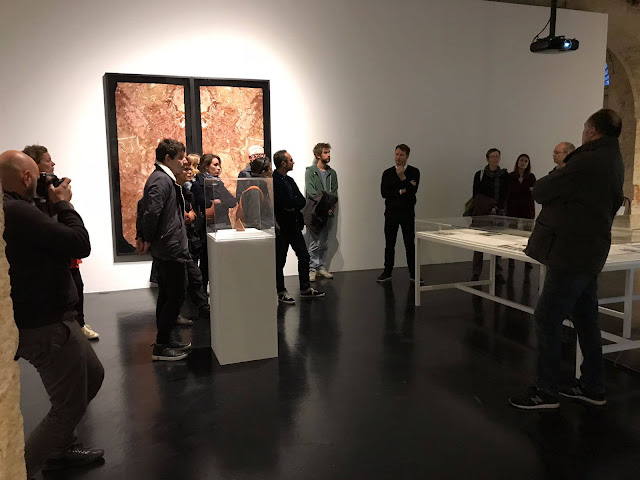Cover Stories' are published on a monthly basis on Latitudes' homepage and feature past, present or forthcoming projects, research, writing, artworks, exhibitions, films, objects or field trips related to our curatorial activities.
(Above and below) View from "Artengo2000", exhibition by Camille Orny and Magda Vaz at the Sala Petita in La Capella. Photo: Pep Herrero / La Capella.
"Bringing the format of the miniseries into the Sala Petita, Camille Orny & Magda Vaz have created a drama-documentary for six screens premised on the story of a group of five flatmates—including semi-fictionalized versions of themselves—who have struck a sponsorship deal with a corporation known as Artengo. In one reality Artengo is a sub-brand of the sporting goods retailer Decathlon dedicated to racket sports, yet in another reality, it is an arcane Russian-American multinational corporation. The series begins with a dream in which a flatmate is haunted by the Artengo-branded socks that the flatmates have agreed to wear at all times as part of the sponsorship deal that in return sees them receive occasional deliveries of unbranded food and a discount on their gas bill. Artengo2000 is a cumulative narrative: each installment is comprehensive and distinct, while each is grafted onto the body of the series, with certain elements and plot lines that link across.
Artengo2000 hinges on possible spiritual advancements and psychic disorders caused by shared living and by being obedient brand ambassadors. We witness the transformation of a communal flat into a laboratory-like space governed by the unwritten transactions entailed in lifestyle sponsorship and company patronage. Although the drama takes us to Montjuïc, the W Barcelona hotel, and to the Arenas shopping centre, and other branded flats, the Artengo apartment itself is the core psychological location. Yet in contrast to the breezy comedic and romantic adventures of the flat-sharing television series Friends (1994–2004), the Artengo apartment fills with irrational drama, distrust, deranged dreams, and doppelgängers. The flatmates become more like guinea pigs in a pioneering space station, afloat in a void at the limits of corporate ethics, loyalties and interpersonal relations. Characters include Camille and Magda’s flatmates Manu and Laura, a washed-up professional tennis player, and a supposed Danish-Catalan man named Borja with an academic interest in the introduction to Barcelona of novel and more covert forms of whole-life sponsorship.








































































